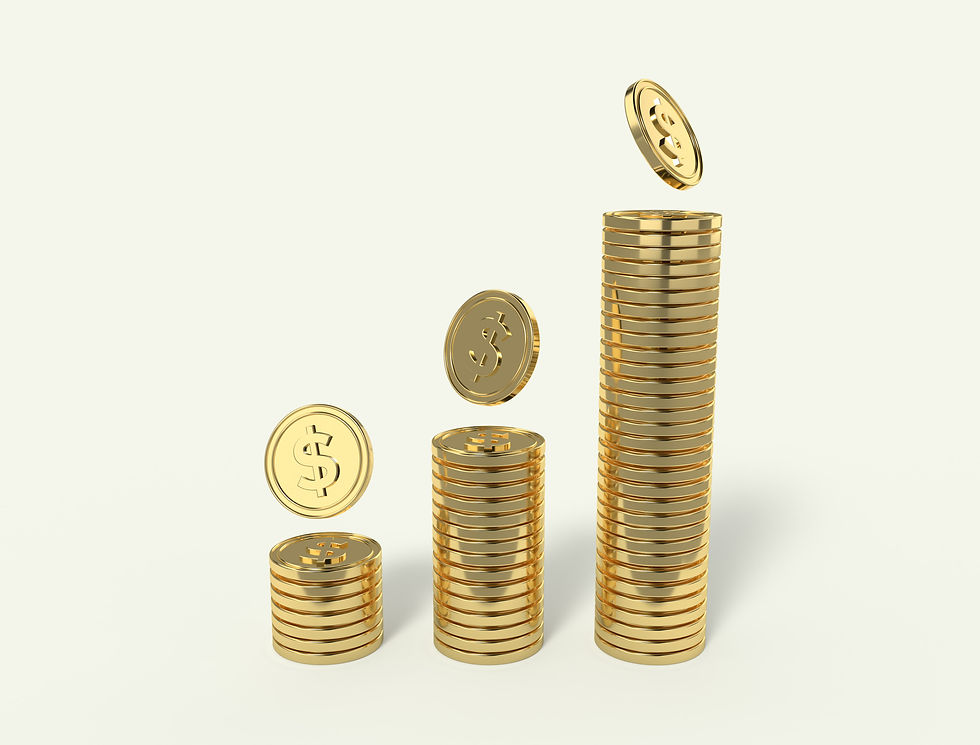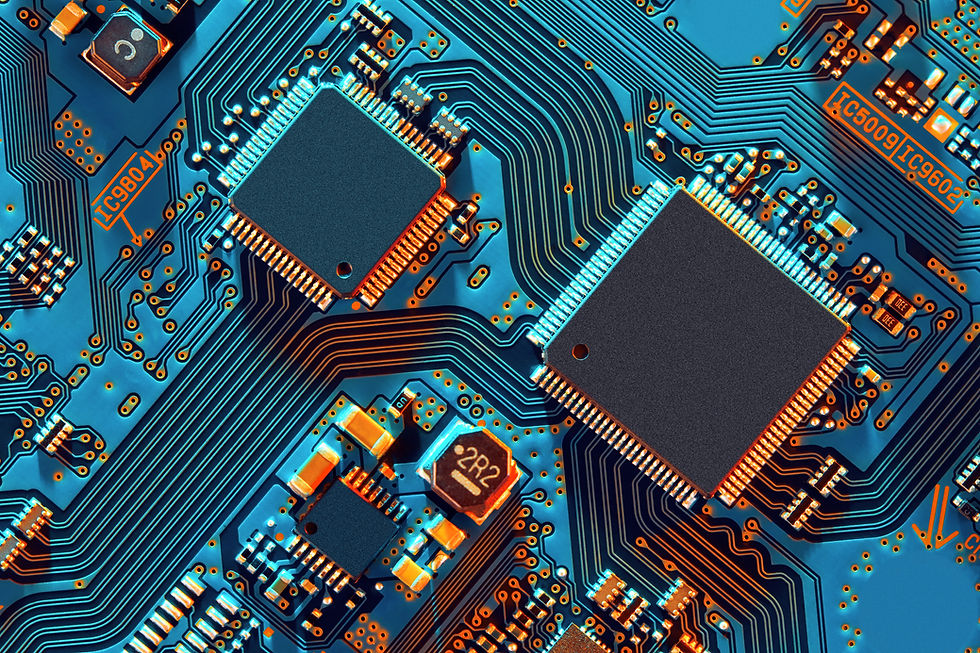Silica, Silicon & Silicone: Differences & Similarities
- Sylvia Rose

- Dec 12, 2024
- 4 min read
Updated: Feb 26
Silica, silicon, and silicone refer to related but distinct substances with specific properties, applications, and origins. Silica is created from silicon, especially preferred in glass making. Silicon, a metalloid, is also used to make the synthetic material silicone.

Silica
Silica or silicon dioxide (SiO₂), is a natural compound of silicon and oxygen. One of the most prevalent minerals in the Earth's crust, it's found in forms such as quartz, cristobalite, and tridymite. Silica is abundant in materials like sandstone, granite, and various types of sand.
The fusion of this sand by lightning, meteor impact, sudden cooling of lava, or nuclear weaponry creates various types of glass. Varieties include yellow Great Sand Sea Glass (Libyan Desert Glass), black obsidian and dynamic green formations of moldavite.

Silica is recognized for hardness and resistance to chemicals. It can endure high temperatures and withstands acids, essential in construction materials like cement and glass. Silica sand makes up about 70% of the raw materials used in glass manufacturing.
Silica is used in many industrial processes. It's necessary for production of silicon, especially in for electronics and solar panels. The global silicon market is projected to grow 6.5% annually, reaching $24 billion in 2026.

Silicon
Silicon is a chemical element (Si) in group 14 of the periodic table. As a metalloid, it has properties of both metals and non-metals. Silicon constitutes about 27.7% of the Earth's crust, typically present as silica or silicates.
Its unique semiconductor properties are used in the electronics industry. To produce silicon, silica is heated with carbon in an electric furnace, reducing silicon dioxide to silicon and carbon dioxide.

This method yields metallurgical-grade silicon, which can be further refined to high-purity silicon for electronic applications. For instance, silicon wafers, used in semiconductor devices, are often produced from crystalline silicon with purities exceeding 99.9999%.
Silicon is extensively used in various applications, from solar panels to computer chips. In 2022, more than 95% of the silicon produced globally was dedicated to the semiconductor industry. A semiconductor has specific electrical properties in computers and other devices.

Silicone
Silicone is a term used for a group of synthetic materials made mainly from silicon, oxygen, carbon and hydrogen. Unlike silica and silicon, which are naturally occurring, silicone is man-made through polymerization.
This process combines silicone compounds to create a versatile substance available in various forms, ranging from fluids to rubber-like solids.

Silicone has qualities such as flexibility, and heat and water resistance. These traits make it popular in medical devices, bakeware and sealants. Silicone bakeware can withstand temperatures of over 260 °C (500 °F).
With non-toxic properties it's a versatile product, for instance in baby bottle nipples and medical implants, where biocompatibility is critical. Silicone is often used in medical devices. It's less likely to cause allergic reactions in patients compared to other materials.

Similarities and Differences
Property/ Characteristics | Silica (SiO₂) | Silicon (Si) | Silicone |
Nature | Naturally occurring compound | Element | Synthetic polymer |
Composition | Silicon and oxygen | Pure silicon | Silicon, oxygen, carbon, hydrogen |
Physical Form | Solid, crystalline | Solid, brittle | Flexible polymer |
Abundance in Nature | Very abundant (59% of crust) | Very abundant (27% of crust) | Man-made |
Uses | Construction, glass, semiconductors | Electronics, solar panels | Cookware, medical devices, sealants |
Health Hazards | Respiratory risks from dust | Minimal, but fine powder caution | Generally safe, potential allergic reactions |

Hazards and Safety
Silica: Crystalline silica can pose health risks when inhaled, leading to respiratory issues like silicosis. Protective masks are essential in environments where silica dust levels are high.
Silicon: Generally considered safe, silicon poses minimal hazards. The processes to convert silica to silicon can create chemical risks, including exposure to carbon monoxide during reduction processes.
Silicone: Silicone is largely viewed as safe for general use. It is biocompatible, or less likely to cause adverse reactions in contact with the body. Silicone products from high-quality materials usually have fewer fillers than lower-grade silicone.

Facts
Natural vs. Synthetic: While silica and silicon occur naturally, silicone represents human manufacturing and use of these elements to create versatile materials.
The human body has around 7 grams of silicon in tissues and fluids. Silicon in tissues is usually bonded to such glycoproteins as cartilage.
Silicon in technology: Silicon's contribution to technology is immense. It is the second most abundant element in the universe, after oxygen, essential for many electronic devices.

Silicone’s Versatility: Silicone can be engineered to mimic natural rubbers or plastics. This versatility leads to products like waterproof outdoor gear, breast implants and durable kitchen essentials.
Silica in Everyday Life: Silicon dioxide (as silica) plays a key role in making most commercial glass products. Its use dates back thousands of years.
Environmentally Friendly: Silicone can be produced to be more stable and longer-lasting than plastics, creating interest in using it as an eco-friendly alternative for many consumer products.

Non-Fiction Books:
Fiction Books:
READ: Lora Ley Adventures - Germanic Mythology Fiction Series
READ: Reiker For Hire - Victorian Detective Murder Mysteries


